OT-64 SKOT
The OT-64 SKOT (Czech acronym for: Střední Kolový Obrněný Transportér, and/or Polish Średni Kołowy Opancerzony Transporter – medium wheeled armoured transporter) is an amphibious, armored personnel carrier (8x8), developed jointly by Poland and Czechoslovakia (ČSSR) well into the 1960s.
| OT-64 SKOT | |
|---|---|
 OT-64A SKOT-2A | |
| Type | Wheeled Amphibious Armored Personnel Carrier |
| Place of origin | Czechoslovakia, Poland |
| Service history | |
| In service | 1963 - present[1] |
| Used by | See Operators |
| Wars | Indo-Pakistani War of 1971 Western Sahara War Iran-Iraq War Operation Blue Star Syrian Civil War |
| Production history | |
| Designed | 1959 |
| Manufacturer | Fabryka Samochodów Ciężarowych (FSC) (Poland)[1] |
| Produced | 1963 - early 1970s[1] |
| No. built | 4500[1] |
| Variants | See Variants |
| Specifications | |
| Mass | 14.5 t |
| Length | 7.44 m |
| Width | 2.55 m |
| Height | 2.71 m |
| Crew | 2 + 18 passengers[1] 2 + 10 passengers (OT-64A and SKOT-2A)[1] |
| Armor | 6-13 mm |
Main armament | 7.62 mm PKT machine gun and 14.5 mm KPV machine gun. |
| Engine | air-cooled Tatra T-928-14 V-8 diesel 177 hp |
| Power/weight | 12.4 hp/tonne |
| Suspension | 8x8 or 8x4 |
Operational range | 710 km |
| Maximum speed | 94 km/h (in water 9 km/h) |
Until the early 1970s Czechoslovakia produced around 4,500 OT-64 SKOTs of all variants, just under a third of which were exported.[2]
History
OT-64 was intended to replace the halftrack OT-810, which was nearly identical to the German Sd.Kfz. 251 from World War II. The first prototype was built in 1959. In 1961 the first sample series were built and starting from October 1963 the vehicles were produced in Lublin, Poland by Fabryka Samochodów Ciężarowych. Czechoslovakia supplied the driveline components, i.e. the engine, transmission and axles. The first production vehicles were delivered in 1964 to both the Polish Army and Czechoslovak Army. They were also acquired by the Hungarian army. Today they are gradually being replaced by newer vehicles.
Technology

The OT-64's engine, transmission, suspension and axles were produced in Czechoslovakia. The engine was produced by Tatra. The gearbox was manufactured by Praga Hostivař. It has a pre-select Praga-Wilson gearbox, (5 forward +1 reverse gears.) A gear is selected using the gear stick then when the gear is required the left pedal (gear change action/clutch combined) is pressed to the floor, giving a hiss of air sound, on release of the pedal the dry plate clutch engages after about half the return spring controlled movement. The drive then passes to an auxiliary gearbox with low, neutral and high ratios which needs to be selected before moving off, for road/neutral/off-road use, this gives option to the driver of 10 forward and 2 reverse ratios. The gear change pedal is hydraulic and on action opens an air valve which causes the selected gear to engage. The armored hull and weapons were produced in Poland.
The OT-64 was the answer to the Soviet BTR-60. Contrary to this, the OT-64 used a diesel set in place of a petrol engine. That diminished the danger of fire and at the same time increased the range. The main advantage in relation to the Russian counterpart was the full-armored interior. The entrance is at the rear of the vehicle via twin doors. The OT-64 had an NBC protection facility and night-vision equipment. It also has central inflation for all wheels which can be controlled by driver during a drive. The OT-64 was air-transportable and amphibious, for the transport on water used two propellers installed at the back.
Several variants were built. Some OT-64 were re-equipped for air defense or built as tank hunters. The latter used the AT-3 Sagger missile as a weapon.
Service history
OT-64 SKOT entered service with Polish and Czechoslovak armies in 1963. It was produced until the early 1970s. It is still in service in Poland and Slovakia, among other operated by the Slovak police.[3] Czech units were replaced in 2006 by new armoured vehicles Pandur II CZ.[2] During the 1990s, Slovakia purchased hundreds of these units from the Czech Republic (150 in 1994, 100 in 1998). Slovaks then sold them to other, mainly African, countries. OT-64 SKOT was also exported to eleven different countries. A total number of vehicles produced is 4,500.[1]
Variants
Czechoslovakia
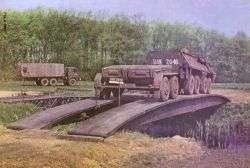
- OT-64 - Original version, used in the APC role. Early models were unarmed but later the vehicle was fitted with a pintle-mounted 7.62 mm light machine gun or 12.7 mm DShK 1938/46 heavy machine gun. They used to be known in the West as respectively OT-64A and OT-64B. Some 12.7 mm DShK 1938/46 heavy machine gun armed OT-64 APCs had shields around the heavy machine gun mount.[1][4]
- OT-64 fitted with a small turret from OT-65A. However this one is armed with twin machine guns and doesn't have the 82mm T-21 "Tarasnice" recoilless gun.[4]
- DTP-64 (dilna technicke pomoci) - Czech repair version with tow bars, welding equipment and a hand-operated crane with a capacity of 1 tonne. There were two sub-versions, namely the DTP-64/M for mechanized infantry units and the DTP-64/T for tank units. Photos
- OT-64 ZDRAV or ZDR-64 (zdravotni): ambulance.Photos
- OT-64A - Improved version fitted with BPU-1 turret from Soviet BRDM-2 armoured scout car which is armed with a 14.5 mm KPVT heavy machine gun and 7.62 mm PKT coaxial machine gun. In Western sources, this version is often called OT-64C. In the late 1990s, some vehicles had the turret replaced by a pintle-mounted machine gun for peace keeping operations.Photos The OT-64A is used as the basis for several command vehicles (velitelsko štábní obrněný transportér) fitted with multiple radio sets, a 1 kW generator and an antenna mast:
- VSOT-64/R2 R102 - Unarmed signals and command variant.
- VSOT-64/R2 R105 - Unarmed signals and command variant.
- VSOT-64/R2 R108 - Unarmed signals and command variant.
- VSOT-64/R2M - Signals and command variant with OT-64A's turret.Photos
- VSOT-64/R3 - Unarmed signals and command variant.
- VSOT-64/R3MT - Unarmed signals and command variant.Photos
- VSOT-64/R4MT - Unarmed signals and command variant.
- VSOT-64/R4RT - Unarmed signals and command variant.
- OT-64A fitted with the ATGM mounts on the turret sides.[4]
- OT-64A fitted with the new turret with higher elevation for armament. Similar to Polish SKOT-2AP.[4]
- OT-93 - Export version of the OT-64A with the original turret replaced by the one from the OT-65M or OT-62B. The armament consists of a single 7.62mm machine-gun.Photos
- Cobra - Infantry combat vehicle version with a new turret with 30mm gun 2A42. Did not enter production
Poland

- SKOT-1 - Early, unarmed model, similar to the OT-64.[1]
- SKOT-1A - SKOT-1 fitted with a superstructure in the front of the troop compartment. The superstructure a large, two piece hatch.[1]
- SKOT R-3 - Unarmed command vehicle used by regiment and higher command. It is equipped with 4 radios, 1 radio receiver, 1 microwave radio relay and 1 radiotelephone. The vehicle is operated by seven man crew.[1]
- SKOT R-3M - Unarmed signals and command variant for combat engineer units.
- SKOT R-3Z - SKOT R-3 with modernized radio equipment which it includes the second microwave radio relay.[1]
- SKOT R-4 - Unarmed command vehicle used by division and army command. It is equipped with 4 radios, 3 radio receivers and 3 radiotelephones.[1]
- SKOT-WPT (wóz pogotowia technicznego) - Technical support vehicle with a light crane.
- SKOT S-260 Art (artyleryjski) - Artillery tractor and transport vehicle for ammunition and mortar or anti-tank squads.
- SKOT S-260 Inż (inżynieryjny) - Fitted with racks for anti-tank mines and used to tow mechanical mine layers or mine-clearing systems.
- SKOT-2 - SKOT-1A with pintle MG mount around the hatch of the superstructure. Two types of machine guns were fitted there, 7.62 mm light machine gun (first SGMT and later PKT) or 12.7 mm DShK 1938/46 heavy machine gun. Sides of the machine gun mount are protected with armour plates.[1]
- SKOT-2A - Polish designator for the version with the BRDM-2 turret which was designed in the late 1960s. The vehicle is fitted with conical turret armed with 14.5 mm KPV heavy machine gun and 7.62 mm PKT coaxial light machine gun on the top of the vehicle. Number of soldiers transported in the troop compartment went down from 18 to 10. In Western sources, this version is often called OT-64C.[1]
- SKOT 2AM - A small number of Polish SKOT-2A APCs was fitted with 9M14 Malyutka (AT-3 Sagger) ATGM launchers on the turret sides. The launchers were protected with armour plate or wire mesh. In the West, they were known as OT-64C(1A).[1]
- SKOT R-2 - Command vehicle used by battalion and regiment command. It is equipped with 4 radios: R-112, R-113 and 2 R-105. The vehicle is operated by seven man crew.[1]
- SKOT R-2AM - Unarmed command and fire control variant for artillery units.
- SKOT R-2M - Signals and command variant with SKOT-2A's turret.
- SKOT R-6 - Unarmed signals and command variant.
- SKOT-2AP - Polish modification with a new anti-aircraft WAT turret armed with 14.5 mm heavy machine gun. The turret had higher elevation for its armament and therefore could be used to fire at air targets. The turret has the new CGS-90 sight. This vehicle was known in the West as OT-64C(2).[1]
- SKOT-2A - Polish designator for the version with the BRDM-2 turret which was designed in the late 1960s. The vehicle is fitted with conical turret armed with 14.5 mm KPV heavy machine gun and 7.62 mm PKT coaxial light machine gun on the top of the vehicle. Number of soldiers transported in the troop compartment went down from 18 to 10. In Western sources, this version is often called OT-64C.[1]
- SKOT R-3 - Unarmed command vehicle used by regiment and higher command. It is equipped with 4 radios, 1 radio receiver, 1 microwave radio relay and 1 radiotelephone. The vehicle is operated by seven man crew.[1]
- KTO WR-02 "Ryś" (KTO stands for Kołowy Transporter Opancerzony - Wheeled Armoured personnel Carrier) (Ryś - Lynx) - Heavily upgraded version with Iveco Cursor 8 engine. Work is performed by the 5th Military Mechanical Institute in Poznań.
- KTO WR-02 "Ryś-2" (KTO stands for Kołowy Transporter Opancerzony - Wheeled Armoured personnel Carrier) (Ryś-2 - Lynx-2) - The export version of KTO WR-02 "Ryś".
- SKOT-1A - SKOT-1 fitted with a superstructure in the front of the troop compartment. The superstructure a large, two piece hatch.[1]
Operators
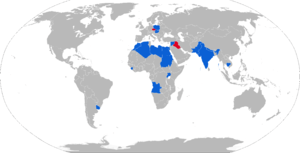
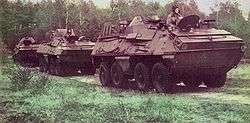

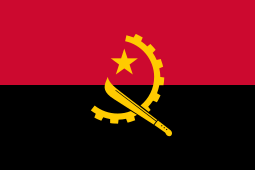
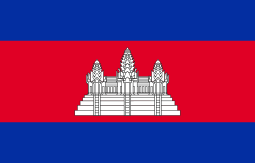



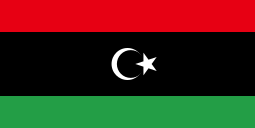

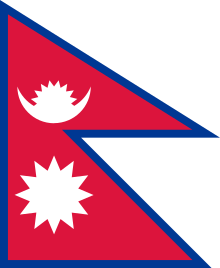


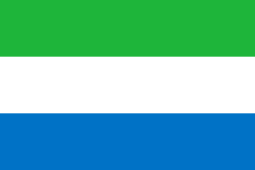






Former operators


.svg.png)
Civilian operators
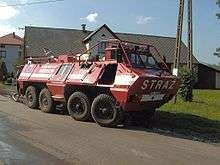
- At least 2 SKOT APCs one in Czech Republic and one in Poland have been modified and are used as firefighting vehicles[12]
- Many SKOT APCs in Poland and the Czech Republic were sold to private owners who make sure they are in working condition and regularly show them on military enthusiast's meetings.[13] Some private Czech OT-64s have number plates and can travel on public roads.[14]
References
- ""Pancerni 1"". Archived from the original on 2008-01-08. Retrieved 2008-01-04.
- "SKOT – žádná kráva, ale český obrňák". Archived from the original on 2015-11-24. Retrieved 2016-01-06.
- "Photo of police SKOT vehicles used during the informal EU summit on September 16, 2016, in Bratislava". 2016-09-16. Archived from the original on February 2, 2017. Retrieved 2017-01-25 – via http://www.minv.sk/?predsednictvo-eu-mv&sprava=na-bezpecnost-pocas-neformalneho-summitu-eu-v-bratislave-dohliadalo-vyse-4-tisic-policajtov.
- ""JED The Military Equipment Directory"". Archived from the original on 2008-05-01. Retrieved 2007-12-26.
- "SIPRI Arms Transfers Database". Archived from the original on 2009-08-05. Retrieved 2012-01-02.
- Algerian army Archived May 29, 2009, at the Wayback Machine armyrecognition.com
- "OT-64 Specifications". Archived from the original on 2012-11-07. Retrieved 2012-01-06.
- Egyptian army Archived May 14, 2009, at the Wayback Machine armyrecognition.com
- Kominek, Jiri (17 May 2017). "Slovak government approves major procurement of wheeled AFVs". IHS Jane's 360. Prague, Czechia. Archived from the original on 18 May 2017. Retrieved 18 May 2017.
- Cooper, Tom; Fontanellaz, Adrien (October 2016). "La guerre du Kagera". Batailles et Blindés (in French). No. 75. Caraktère. pp. 72–81. ISSN 1765-0828.
- ""Czech Ministry of Defense"". Archived from the original on 2008-03-31. Retrieved 2008-04-22.
- Civilian versions of the OT-64 SKOT, www.specops.com.p Archived 2008-08-07 at the Wayback Machine
- MILITARIUM - Wojsko Polskie - Uzbrojenie Archived 2013-08-26 at the Wayback Machine
- Czech SKOT photos, www.specops.com.pl Archived 2008-08-02 at the Wayback Machine
- Jerzy Kajetanowicz - Polish Fighting Vehicles in Post-war period.
- Janusz Magnuski - Wozy Bojowe LWP 1943-1983 Wydawnictwo Miniterstwa Obrony Narodowej - ISBN 83-11-06990-5
- Technika Wojska Polskiego - Dom Wydawniczy Bellona - 1998
Literature
- Philip Terwhitt, "Tank", New Emperor Publishing House, complaint ford, 2005, ISBN 3-7043-3197-X
External links
| Wikimedia Commons has media related to OT-64 SKOT. |
- Czech MoD official site
- English website for Russian Military Trucks
- www.globalsecurity.org: OT-64 (SKOT) (English)
- Panzermodelkit site
- SKOT (Polish)
- KTO Ryś (Polish)
- bharat-rakshak site
- OT-64 (Czech)
- Czechoslovak Army Film - OT 64 (Czech)